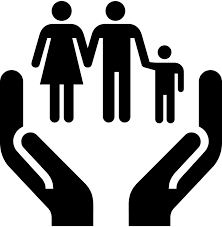
By Colin McGregor
For an adopted child, their integration into their new family has a lot to do with the narrative they hear from their new parents. Where is the biological family? How did they end up in this new family?
Professor Geneviève Pagé of the Social Work Department at the Université du Québec en Outaouais (UQO) has studied this issue. According to her, the main factor in the success of adoptions in the mixed bank program is the openness of adoptive parents. The host family has to be ready to answer all the child’s questions about their family of origin, and the adoption process.
Mixed bank adoptions are the most common kind of adoptions in Quebec. Children are removed from a troubled birth family by youth protection authorities and brought into a more stable environment, a foster home, where they may or may not stay permanently.
In the past, Professor Pagé observes, it was thought that it was best to never bring up the subject of adoption, and to hide a child’s roots from them. But research has shown that it is best to open a dialogue with the youth. They will thereby know that their adoptive parents are open and available, without judgment.
“Knowing where they come from allows for a better self-identity construction and better psycho-social adaptation,” concludes Professor Pagé.
With interracial adoptions, differences in physical appearance must be addressed. In terms of building a self-identity, these differences are important elements for children and teens alike.
When and how should this information be transmitted? Research shows that parents should tell the truth when answering a child’s questions, and do it as early as possible. The child has to understand that their biological family is no longer able to raise them in a caring and attentive manner.
Sibling Links
What do school-age children adopted via the mixed bank program have to say? According to Professor Pagé’s study, there is greater fluidity in sibling links than in links with adults. In other words, children quickly see the biological boys and girls of their adoptive family as their own siblings. Anabelle, age 7, loves “my little half-brother,” but has no ties with her own family of origin.
The study notes the efforts of adults to normalize the removal of the child from their birth family and to distance the parents of origin, with whom the child has no relation. The dialogue is generally caring towards the prior parents (host or biological) who were part of the child’s pre-adoptive history.
Natacha, an adoptive mother, says that “my son has the choice of whether to include his biological father in his family, and I find that totally normal. But for me, his father is not part of the family.” According to Professor Pagé, a family might include several people, but may not necessarily include everyone the adoptive child has a link with.
According to Marie-Pierre Ulysse, a manager in charge of foster care at the CIUSSS of the Ouest-de-l’Île-de-Montréal (Montreal West Island), evaluating parents who wish to adopt involves two very important elements: “There is the risk that the birth family might take the child back if their situation improves. If they are sent back, how will you react? As well, there is the eventual behavior towards the biological parents… You don’t have to own the child. You should be satisfied with the pleasure of raising the child.”
Accompany for Life
But if the mixed bank adoption works, the adoptive parents have to be ready to accompany the child for life, Ulysse says.
Since there is more than one way to adopt a child, candidates may be on more than one adoption list at the same time. There are families that wish to adopt “that are very closed,” Ulysse says. “They say no, I want no contact with the other family.” These families are placed on a list for children who were given up to the adoption process by their birth parents.
According to the CISSS of the Outaouais, numerous children are looking for an adoptive family. The CISSS is looking for adoptive parents:
– Who can listen and talk about difficult emotions (frustration, sadness, anger, etc.);
– Who can accept and cope with the child’s need to be disciplined and trained;
– Who know that they can’t fix everything, no matter how much love they have to give;
– Who accept being accompaniers, guides, offering firm support.
For more information on adoptions, please contact the CISSS or CIUSSS in your region.
As seen in Reflet de Société, No 32-5, juin-Juillet (June-July) 2024, pages 16-17.


Leave a Reply